Crisis Management in Anesthesiology, 2nd Edition
The long-awaited revision to the definitive source for crisis management in anesthesia provides updated insights on the latest theories, principles, and practices in Anesthesia. From anesthesiologists and nurse anesthetists to emergency physicians and residents, Crisis Management in Anesthesiology, 2nd Edition will effectively prepare you to handle a critical incident during anesthesia.
The long-awaited revision to the definitive source for crisis management in anesthesia provides updated insights on the latest theories, principles, and practices in Anesthesia. From anesthesiologists and nurse anesthetists to emergency physicians and residents, Crisis Management in Anesthesiology, 2nd Edition will effectively prepare you to handle a critical incident during anesthesia.
Key Features
- Identify and respond to a broad range of life-threatening situations with the updated Catalog of Critical Incidents, which outlines what may happen during surgery and details the steps necessary to respond to and resolve the crisis.
- React quickly to a range of potential threats with an added emphasis on simulation of managing critical incidents.
- Useful review for all anesthesia professionals of the core knowledge of diagnosis and management of many critical events.
- Explore new topics in the ever-expanding anesthesia practice environment with a detailed chapter on debriefing.
- eBook version included with purchase.
Author Information
| ISBN Number | 9780443065378 |
|---|---|
| Main Author | By David M. Gaba, MD, Kevin J. Fish, MSc, MB, ChB, FRCA, FRCPC, Steven K. Howard, MD and Amanda Burden, MD |
| Copyright Year | 2015 |
| Edition Number | 2 |
| Format | Book |
| Trim | 152w x 229h (6.00" x 9.00") |
| Illustrations | 6 illustrations |
| Imprint | Saunders |
| Page Count | 432 |
| Publication Date | 25 Aug 2014 |
| Stock Status | IN STOCK |
1. Fundamentals of Dynamic Decision Making in Anesthesia
2. Specific Principles of Anesthesia Crisis Resource Management
3. Teaching Anesthesia Crisis Resource Management
4. Debriefing
5. Generic Events
Acute Hemorrhage
Cardiac Arrest
Difficult Tracheal Intubation
Emergent (Crash) Induction of Anesthesia
Esophageal Intubation
High Inspired CO2
High Peak Inspiratory Pressure
Hypertension
Hypotension
Hypoxemia
Operating Room Fire
ST Segment Change
The Septic Patient
The Trauma Patient
6. Cardiovascular Events
Acute Coronary Syndrome
Anaphylactic and Anaphylactoid Reactions
Autonomic Dysreflexia
Cardiac Tamponade
Nonlethal Ventricular Arrhythmias
Pulmonary Edema
Pulmonary Embolism
Sinus Bradycardia
Supraventricular Arrhythmias
Venous Gas Embolism
7. Pulmonary Events
Airway Burn
Airway Rupture
Anterior Mediastinal Mass
Aspiration of Gastric Contents
Bronchospasm
Endobronchial Intubation
Epiglottitis (Supraglottitis)
Hypercarbia
Hypoxemia During One-Lung Ventilation
Massive Hemoptysis
Pneumothorax
Postoperative Stridor
Unplanned Extubation
8. Metabolic Events
Addisonian Crisis (Acute Adrenal Insufficiency)
Diabetic Ketoacidosis
Hyperkalemia
Hypoglycemia
Hypokalemia
Hyponatremia and Hypo-osmolality
Hypothermia
Malignant Hyperthermia
Metabolic Acidosis
Methemoglobinemia
Oliguria
Thyroid Storm
Transfusion Reaction
9. Neurologic Events
Central Nervous System Injury
Local Anesthetic Systemic Toxicity
Perioperative Visual Loss
Peripheral Nerve Injury
Postoperative Alteration in Mental Status
Postoperative Failure to Breathe
Seizures
10. Equipment Events
Carbon Monoxide in the Anesthesia Circuit
Circle System Expiratory Valve Stuck Closed
Circle System Inspiratory Valve Stuck Closed
Circle System Valve Stuck Open
Common Gas Outlet Failure
Drug Administration Error
Electrical Power Failure
Faulty Oxygen Supply
Gas Flow Control Malfunction
Intravenous Line Failure
Loss of Pipeline Oxygen
Major Leak in the Anesthesia Breathing Circuit
Pop-Off Valve Failure
Ventilator Failure
Volatile Anesthetic Overdose
Waste Anesthesia Gas Disposal System Malfunction
11. Cardiac Anesthesia Events
Cardiac Laceration
Coagulopathy Following Cardiopulmonary Bypass
Emergent "Crash" onto Cardiopulmonary Bypass
Hypotension During Cardiopulmonary Bypass
Low Cardiac Output State Post-Cardiopulmonary Bypass
Massive Systemic Air Embolism
Protamine Reaction
12. Obstetric Events
Amniotic Fluid Embolism (also termed Anaphylactoid Syndrome of Pregnancy)
Cardiac Arrest in the Parturient
Difficult Airway in the Parturient
Emergency Cesarean Section
Hypotension Following Neuraxial Anesthesia
Magnesium Toxicity
Obstetric Hemorrhage
Pre-eclampsia and Eclampsia
Total Spinal Anesthesia
13. Pediatric Events
Acute Hemorrhage in the Pediatric Patient
Anaphylaxis in the Pediatric Patient
Aspiration of a Foreign Body
Bradycardia in the Pediatric Patient
Cardiac Arrest in the Pediatric Patient
Difficult Airway Management in the Pediatric Patient
Hypotension in the Pediatric Patient
Laryngospasm
Masseter Muscle Rigidity
Sinus Tachycardia in the Pediatric Patient
"The distinguished authors of this latest edition build on these foundations, which now include new chapters on teaching CRM and the vitally important skill of debriefing colleagues after they have experienced such challenging events. The catalogue of critical incidents has been completely overhauled and updated, to reflect contemporary practice with nearly 20 new scenarios added". Reviewed by British Journal of Anaesthesia, Jun 2015
"Those preparing for examinations, including maintenance of certification, or those preparing others for these exams will find this book to be an excellent resource." Reviewed by Jane Torrie, Oct 2015
“This is a tremendous book with the single focus of improving patient safety in the fluid situation of anesthesia administration. Every residency program has a curriculum to deal with predictable situations, but not necessarily with unpredictable situations. Other books on similar topics stress medical knowledge to improve the safety of patients, but this is the only one that highlights the importance of the development of cognitive and behavioral skills that are important for averting disaster in crisis situations. This is a must read for safe and better care of patients under anesthesia.”
-Tariq M. Malik, MD (University of Chicago Pritzker School of Medicine) Doody's Score: 100 – 5 Stars!
"Who should buy this book? The authors state in the Preface that they wrote it for everyone who administers anesthesia, from trainees to experienced practitioners. I have to say that I enthusiastically agree!"
-Manuel Pardo, Jr., M.D., University of California (Anesthesiology 2016; 124:738-40)
Related Products
-
 Online Resource
Netter's Dissection Video Modules (Retail Access Card)
Online Resource
Netter's Dissection Video Modules (Retail Access Card)University of North Carolina Chapel Hill and Frank H. Netter
Oct 2015
$180.99 -
25% OFF
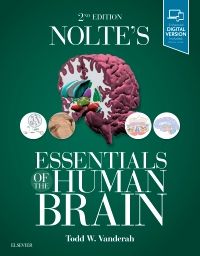 Book
Book
-
25% OFF
 Book
Nolte's The Human Brain in Photographs and Diagrams
Book
Nolte's The Human Brain in Photographs and DiagramsTodd W. Vanderah
Jan 2019
Special Price $47.99 $63.99 -
25% OFF
 Flash Cards
Flash Cards
-
25% OFF
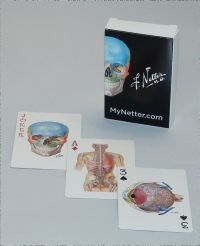 Flash Cards
Flash Cards
-
25% OFF
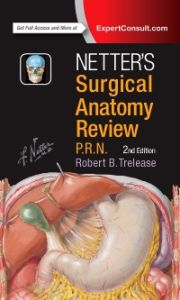 Book
Book
-
25% OFF
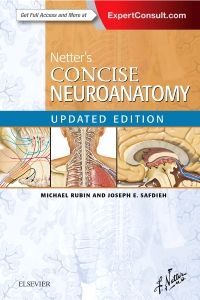 Book
Book
-
20% OFF
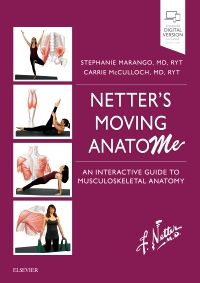 Book
Book
-
25% OFF
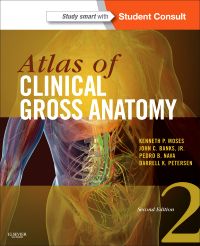 Book
Book
-
25% OFF
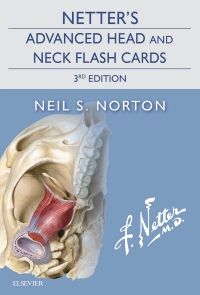 Flash Cards
Flash Cards


